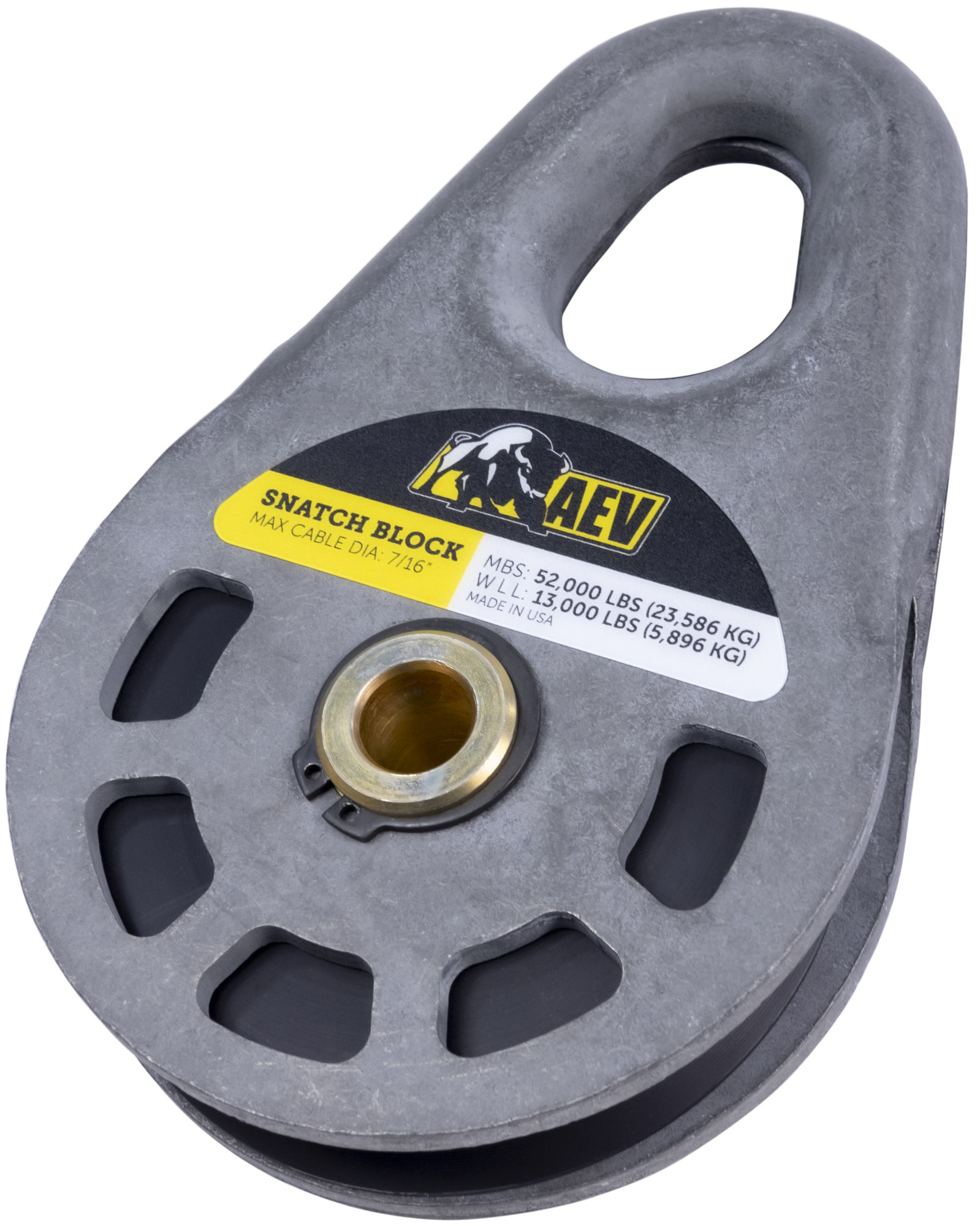

Then you can easily thread the cable/line from the winch through it. Typically, a snatch block has a side plate that can be opened. Later in this post, we will elaborate on this topic. Those are using it for overhead lifting, to recover a stuck vehicle, and to tow a broken down vehicle on the highway. But, primarily, you can use it in 3 ways. If you are creative, you can use it in many ways. How Does a Snatch Block Work? (Three Ways to Use) Among them, the swing block type is the most commonly used snatch block for recovering vehicles. Those are ones with a hook, snatch block with a shackle, and snatch block with a flexible side plate (swing block).

But primarily, based on the mechanism and design, we can say that there are 3 types of snatch blocks. Snatch blocks can be classified into many categories depending on the size, design, and mechanism. Then simply start winching and let the snatch block working its magic.Finally, engage the clutch on the winch and put line dampeners on the winch cable for safety reasons.You can then pull the winch rope through the snatch block and connect it (the hook) back to the recovery vehicle’s anchor point.At this point, you need to connect the heavy-duty shackle to a sturdy and reliable anchor point on the stuck vehicle.Now, you have to connect and secure the heavy-duty shackle to the snatch block.Then, open the snatch block’s side plate and thread the winch cable through and close it as usual. Pull the winch cable until you have reached the stuck vehicle.Then disengage the clutch on the winch so that you can pull out the rope/cable from the winch.First, park the towing vehicle on a stable and flat surface if possible.
SNATCH BLOCKS HOW TO
But here we will tell you how to use a snatch block to recover a stuck vehicle easier. You can use a unit in many different situations. However, for safety reasons, you should be very careful while using it. However, in the automotive industry, a snatch block is used as a winch accessory in recovery situations. Primarily, a snatch block can be used to lift cargo overhead or haul heavy loads without additional tools. On top of that, you can also change the direction of the winch cable using a snatch block. Typically, it is made of metal and designed for pulling heavy and large loads with less force.Īs it comes with a flexible side plate, you can thread the cable of your winch through it to double the pulling capacity of the winch.


Questions?Ĭall to speak to one of our product experts today to learn more about snatch blocks, receive a custom quote, or get assistance placing an order.To put it simply, a snatch block is a special type of heavy-duty pulley that has a side plate that swings open. They also meet critical performance factors that aren't addressed by ASME B30.26, such as material traceability and fatigue life. They meet or exceed all requirements of ASME B30.26 - these include temperature requirements, identification ductility, proof load, and design factor. These tailboard snatch blocks are no exception. Crosby® Tailboard Blocks QualityĬrosby ® and McKissick® (part of Crosby®) are known for providing reliable, high-quality lifting and material handling accessories. There are two bearing types available: bronze bushing and roller bearings.īronze bushings are best suited for slow-speed operations, while roller bearings work better for high-speed operations. They have pressure lube fittings and are fatigue-rated as well. The opening feature lets you put in the rope without reeving! These tailboard blocks are designed to make rope insertion simple. Straightpoint Load Monitoring Loadcells.


 0 kommentar(er)
0 kommentar(er)
